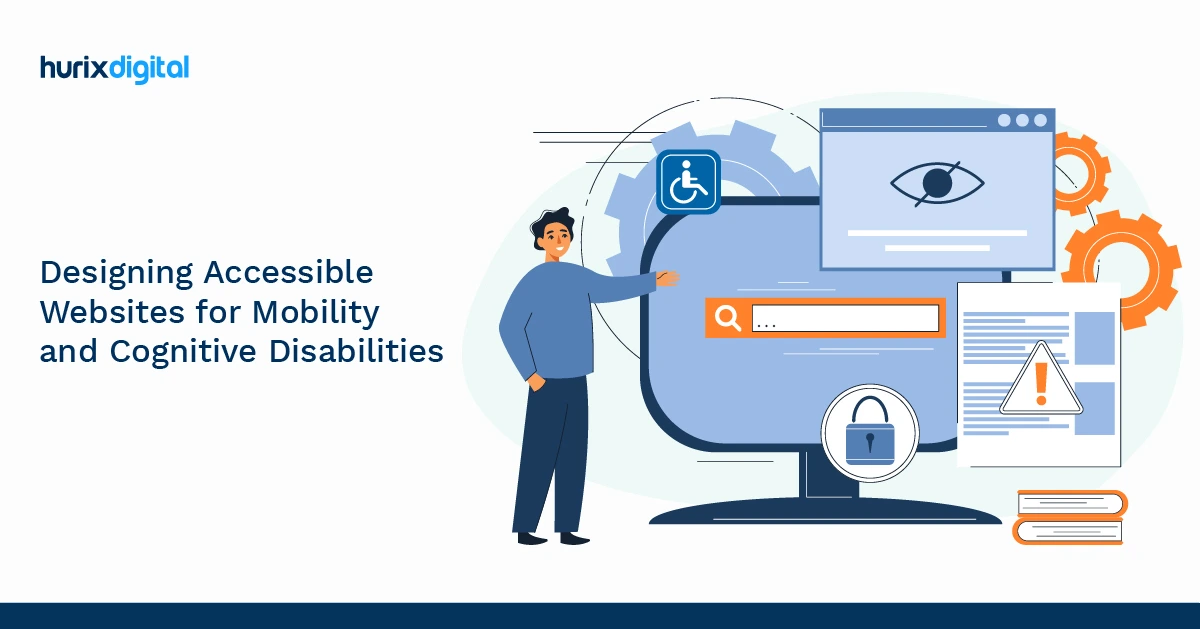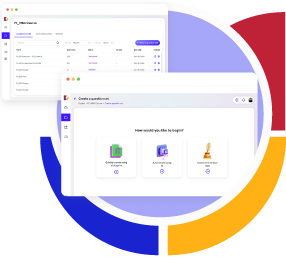
Adoption of Enterprise UX Solutions as a Digital Transformation Best Practice
Summarize with:
Today, a growing number of businesses and sectors are adopting the use of digital technology to produce superior products, services, and user experiences. Businesses are making extensive investments in tech-enabled solutions to accelerate growth, win more customers, drive sales, and build sustainable, profitable, scalable enterprises. By 2027, global spending on digital transformation is estimated to rise to $ 3.9 trillion. This will be a significant growth from just $ 0.96 trillion in 2017.
Yet, despite these investments, many businesses face a common challenge – business teams lack a collaborative, cohesive work experience due to a disjointed user experience with their software. A poorly curated technology stack triggers this scenario.
In this article, we focus on key strategies that businesses can adopt to improve efficiency through UX (User Experience). In turn, they can create elevated, unified user experiences that drive cross-departmental efficiency.
Table of Contents:
- Digital Transformation in Silos – Brief Overview
- Strategies for Superior, Unified Digital Transformation
- Harness the Power of Enterprise UX Solutions
- Conclusion
Digital Transformation in Silos – Brief Overview
A siloed approach to digital transformation is costing businesses significantly. This strategy triggers a culture of low efficiency, work productivity, and fractured data management. This is because, even though businesses invest in multiple technology solutions, the solutions do not seamlessly speak to each other. This lack of synergy results in a poor user experience for business teams, and in turn, cross-departmental efficiency.
Say, the product, marketing, and sales teams of an enterprise are not aligned in their use of technology tools, goals, and access to data, there is a higher potential for the company to experience reduced productivity, revenues, and profitability. A recent study, for instance, indicated that a siloed approach to data management is costing the global economy $ 3.1 trillion, annually.
High-impact digital transformation requires that all workforce members be connected seamlessly. Adopting best practices can lead to superior user experiences, better cross-departmental collaboration and efficiency, and higher work productivity in UX.
Also Read: Boosting Retail Customer Service Skills with Digital Learning Solutions
Strategies for Superior, Unified Digital Transformation
Businesses looking to derive the highest ROI from digital transformation investments can consider these strategies to boost efficiency, productivity, revenues, and profitability:
1. Identify Key Operational Challenges
The first step for businesses is to evaluate the entire workflow of operations across all departments. They must have a thorough understanding of how departments communicate, access and share data, and make decisions. They must understand the unique challenges faced by every department.
2. Identify Existing User Experience Gaps
Businesses must engage with team leaders and members across the hierarchy to understand their challenges. For instance, if multiple team members across departments are duplicating the same tasks, this scenario can result in low productivity, errors, and incongruous decision-making. Conducting comprehensive surveys and interviews is key to the success of this information-gathering activity.
3. Conduct an Audit of all Tech-enabled Solutions
Businesses must create an inventory of all software applications used by various teams and review whether the applications are seamlessly connected. For instance, businesses may use CRM systems, a digital publishing platform, and HR management software. Understanding, if data is duplicated, omitted, and lost due to inefficient systems integration can pave the way for a superior solution.
4. Adopt Integrated User Experience Systems
Once businesses have a thorough understanding of the operational gaps, user experience, and technology audit results, they are in a position to take the next step – invest in integrated user experience systems. This approach means that rather than introducing multiple software into the system to address various piecemeal; the entire UX workflow can be reimagined and overhauled to create a unified user experience. This approach requires a mix of research, data, strategy, and technological expertise for relevant, sustainable, effective solutions.
5. Foster a Skilled Workforce
Businesses must offer training to their teams to empower them to use tech-enabled solutions more effectively. For instance, they must be trained on the best practices to leverage UX platforms more effectively, manage and share data securely, communicate with team members across departments, and work with various departments and their team members to drive the best results. Hosting regular training, especially as the integrated UX platforms get upgraded, is key to success.
6. Nurture a Data-Driven Work Culture
One of the most important outcomes of digital transformation is access to data from multiple sources – emails, SMS, social media, phone calls, and official documents. Those businesses that nurture a data-driven culture have greater potential to engage with customers effectively, drive customer retention, reduce customer acquisition costs, and build strong relationships with all stakeholders. The user experience in enterprise software is superior, cohesive, and data-driven. Hence, adopting an integrated UX system can help businesses achieve their data-related goals.
Harness the Power of Enterprise UX Solutions
Enterprise UX solutions, unlike consumer UX, refers to a series of software applications and integrated user experience systems that are designed to empower workforces to function efficiently and effectively.
By adopting the use of such a customized UX solution, businesses can close the gaps in how teams communicate, share and access information, build products, and other functions, across geographies.
Partnering with a technology expert that offers UX as a service allows enterprises to access strategic and customized solutions. They can create unified user experiences, which in turn translate into seamless collaboration between teams.
A superior UX services partner leverages a combination of technologies such as Cloud Computing, Artificial Intelligence (AI), machine learning, natural language processing (NLP), and robotic automation to build seamless workflows that simplify processes and drive superior business outcomes.
Also Read: AI-Enabled Closed Captioning: A Game-Changer for Customer Engagement
Conclusion
As the business landscape becomes more competitive, companies are expected to increase spending on digital transformation. However, a lack of cohesiveness in user experiences within business teams can result in cross-departmental inefficiency. Early investments in superior enterprise UX solutions can help businesses address this challenge. By doing so, they can improve team collaborations, boost work productivity, and accelerate business growth.
Businesses looking to transform in-house user experiences for their team, need access to the right integrated user experience systems to do so. Hurix Digital‘s superior expertise in enterprises’ UX solutions, can help businesses drive a higher ROI with their digital transformation efforts. Connect with us to start a conversation.
Summarize with:

Associate Vice President – User Experience Design at Hurix Digital (EMEA), with 10+ years in UX and design leadership. She champions AI‑driven, inclusive, and strategy‑led UX across banking, fintech, EdTech, MedTech, and e‑commerce sectors.
 We’re live! Explore the all-new
We’re live! Explore the all-new 






